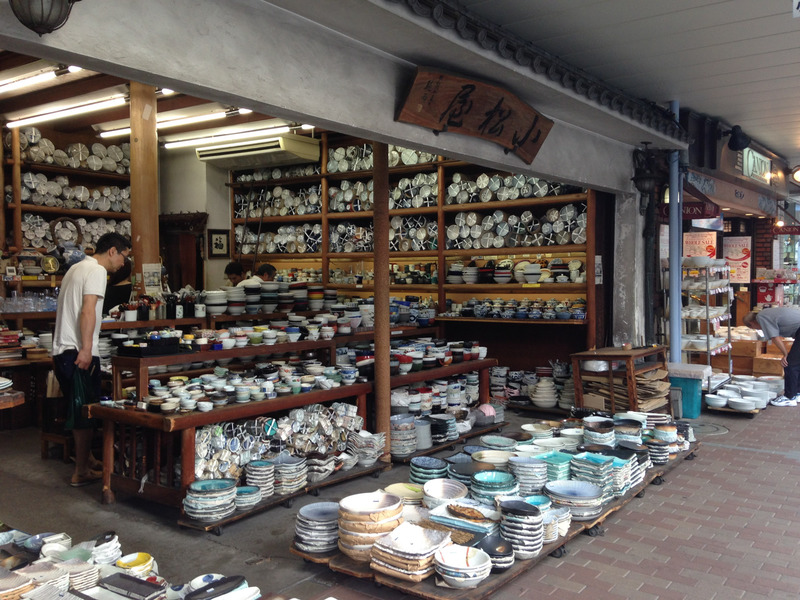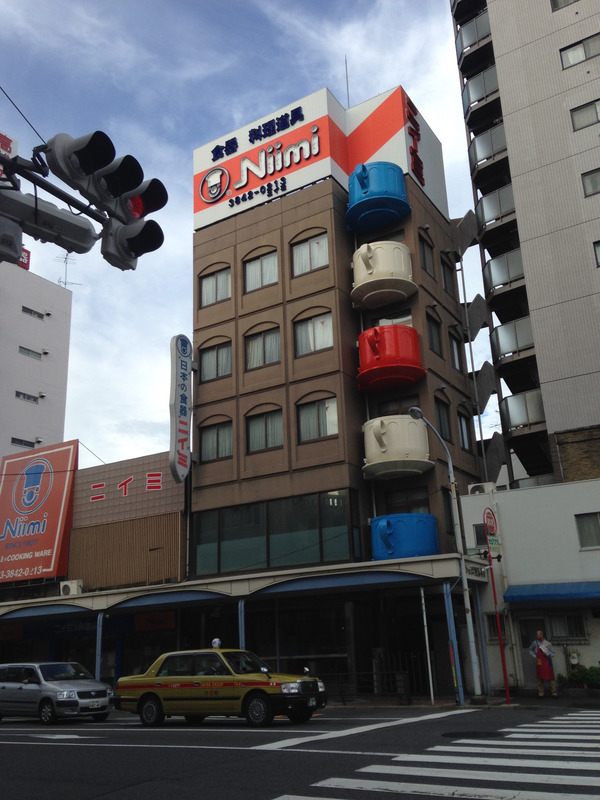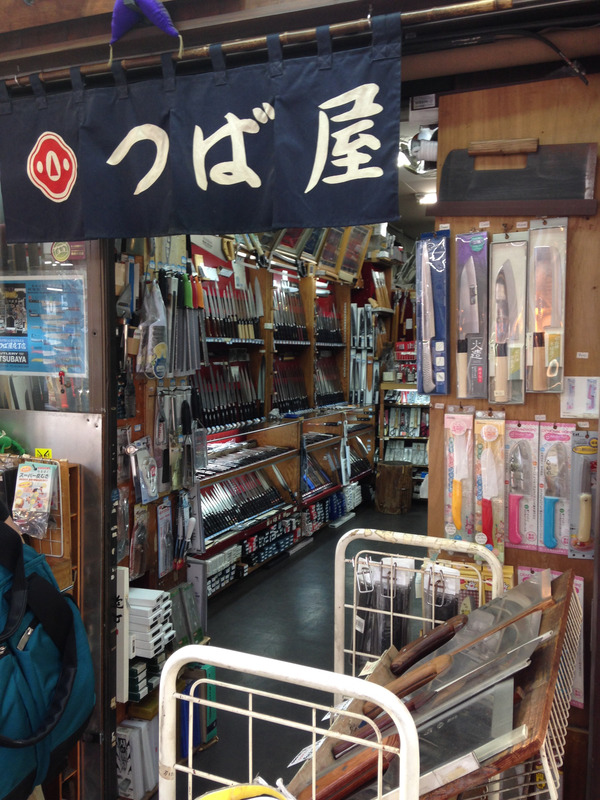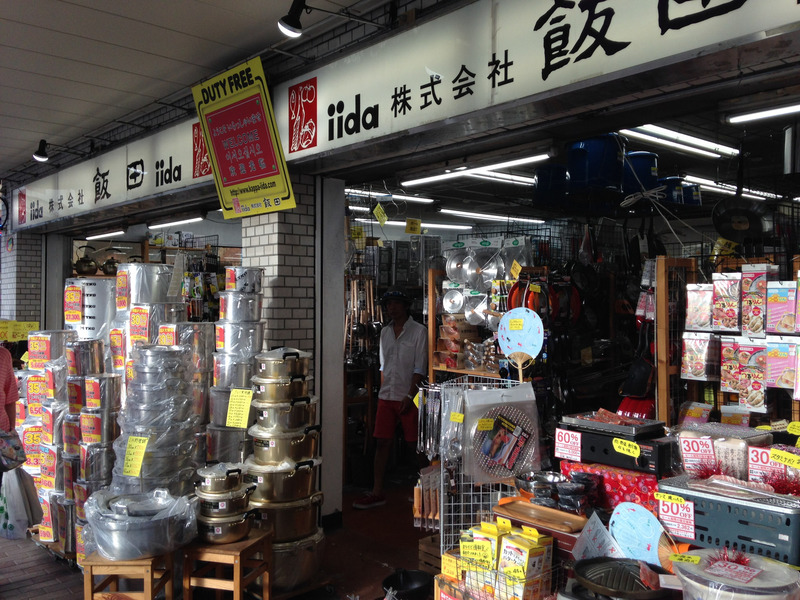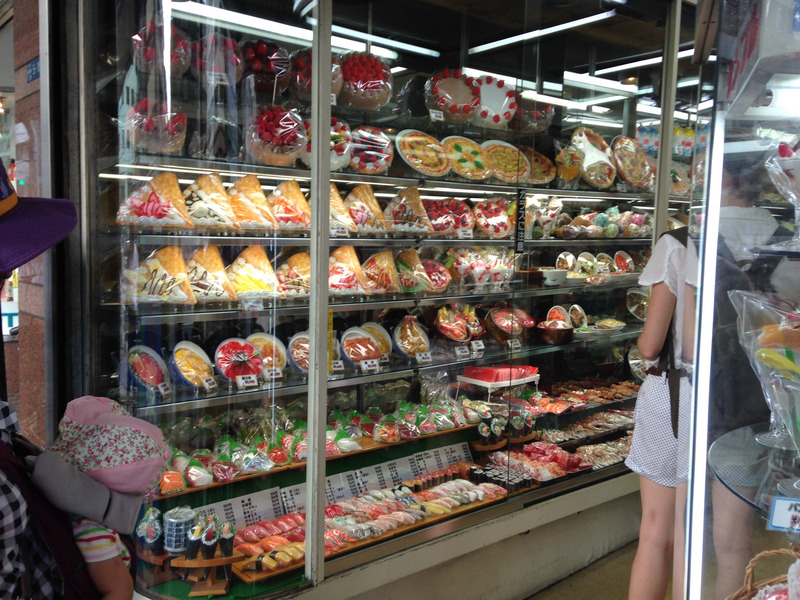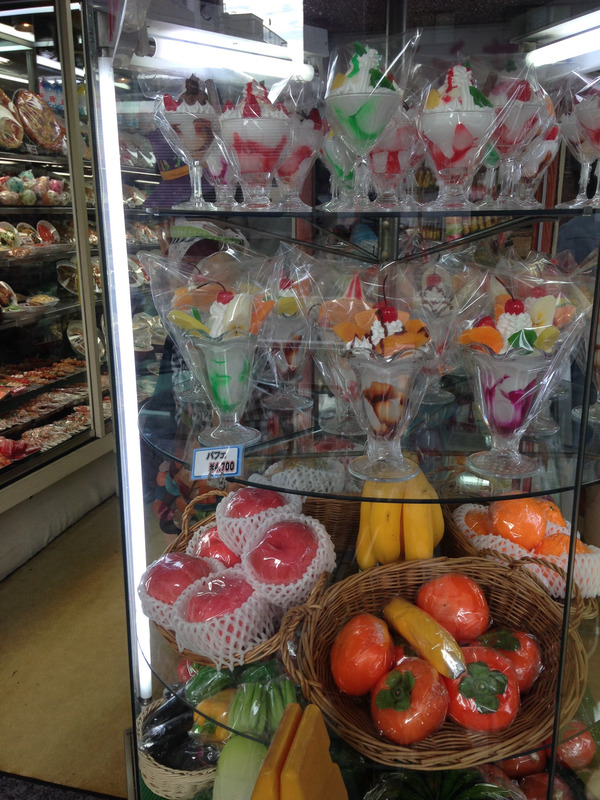Weekend Trip to Tokyo
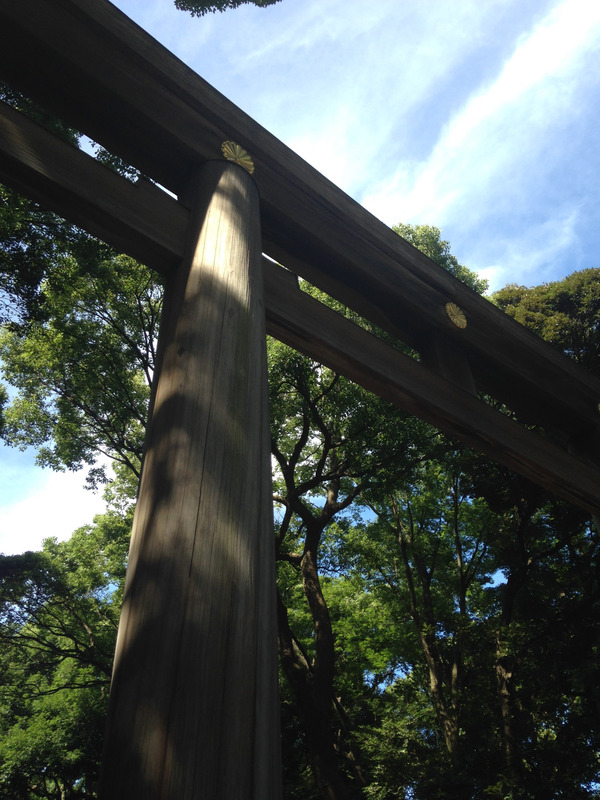
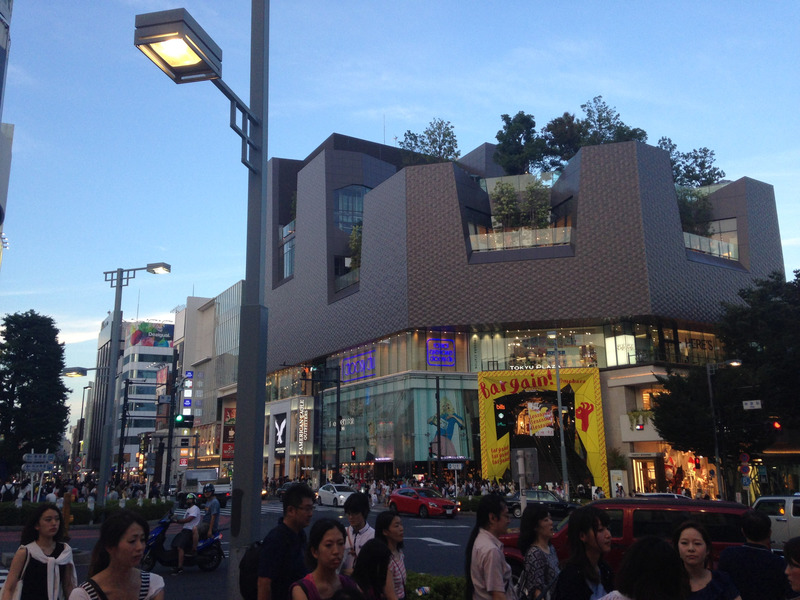
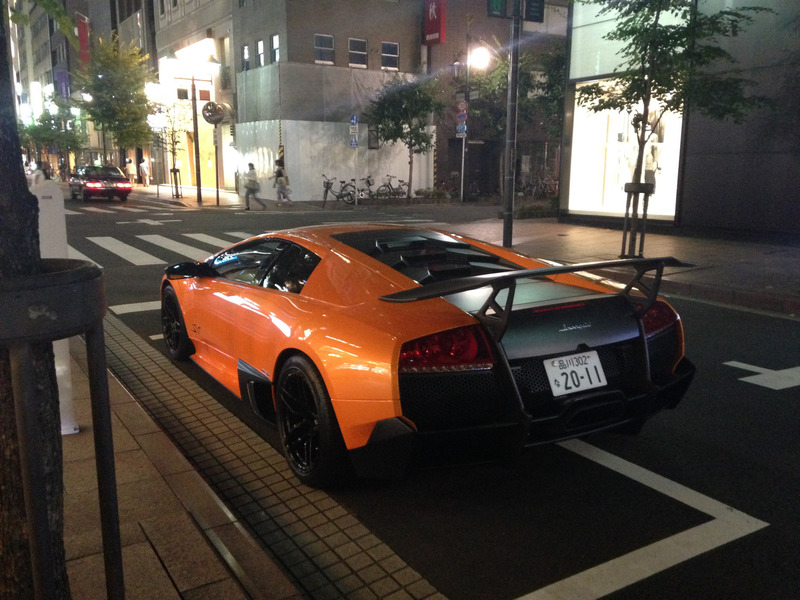
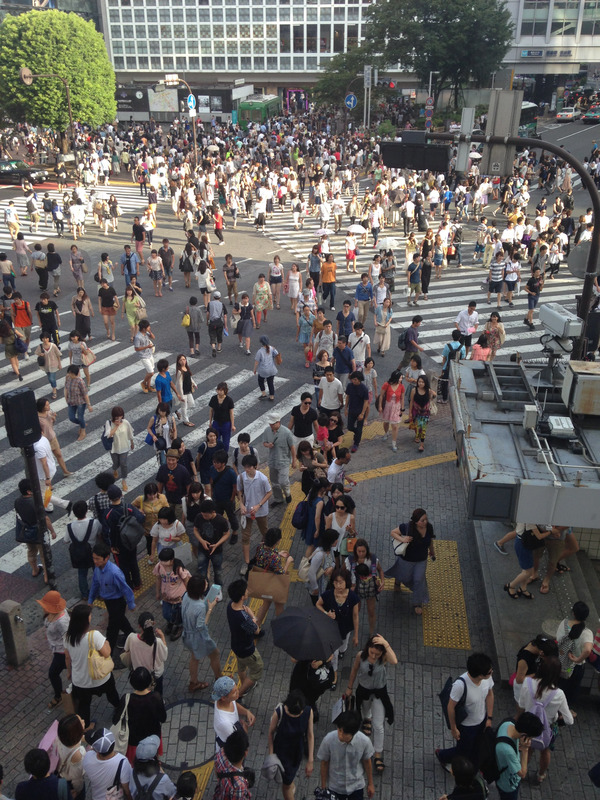
Schedules coincided in such a way that I was able to fly to Tokyo for a couple of days and meet up with Jake. Here are some of the major highlights:
Akihabara
This is a major area for electronics and manga culture. There are lots of large stores right near the station. Labi is a large electronics store that sells laptops, tablets, USBs, cables, etc. Don Quijote is a tall store selling a wide variety of things, including toys, electronics, clothes, bags, etc. The one in Akihabara also sold AKB47 merchandise (a box set of performance DVDs for about $80), and had a maid cafe. Later research revealed that the first AKB47 theatre is located in or near the Akihabara Don Quijote. There were also two floors devoted to arcades. Jeez, I didn’t know that people’s hands could move so fast, and I have no idea why someone would willingly stay in such a loud place for an extended period of time. There was also a maid cafe, which I remember from many of the Japanese dramas I used to watch. Just around the corner is is a six-story tall sex store called Pop Life Department M’s with a wide range of toys, costumes, etc. Use your imagination — it was probably there.
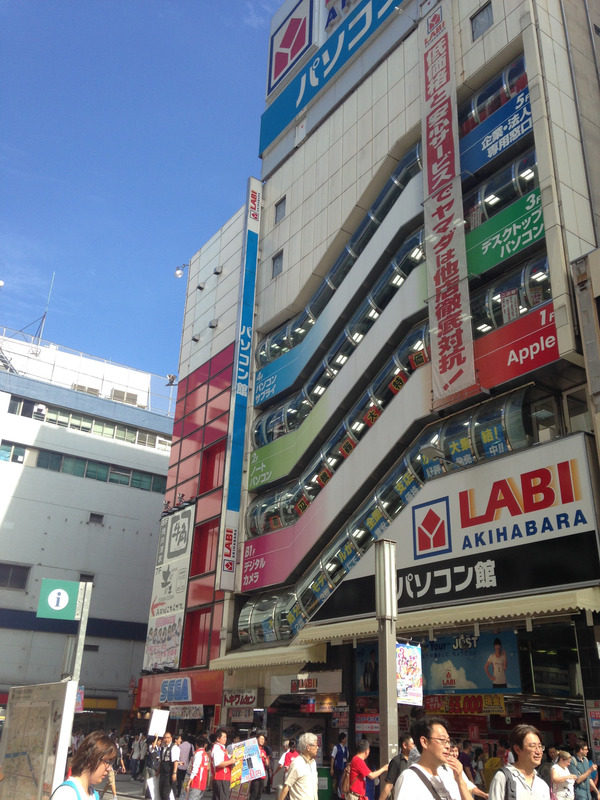
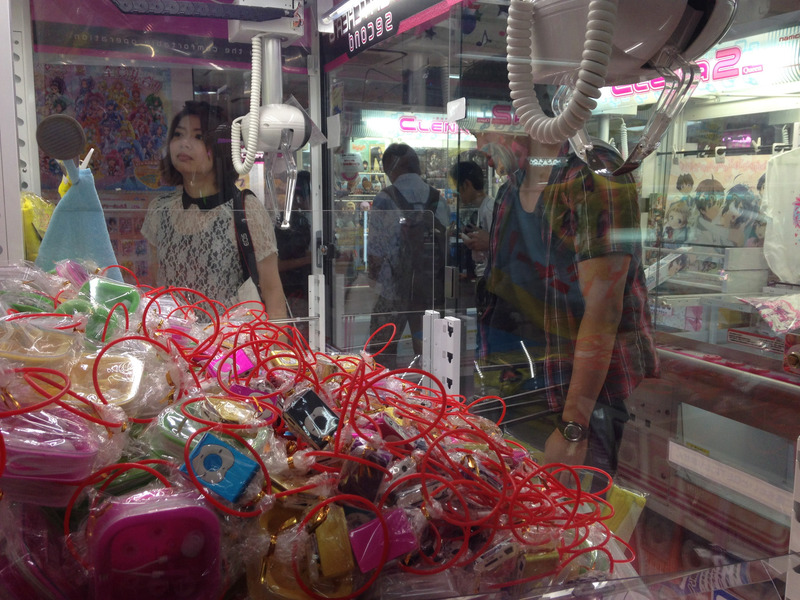
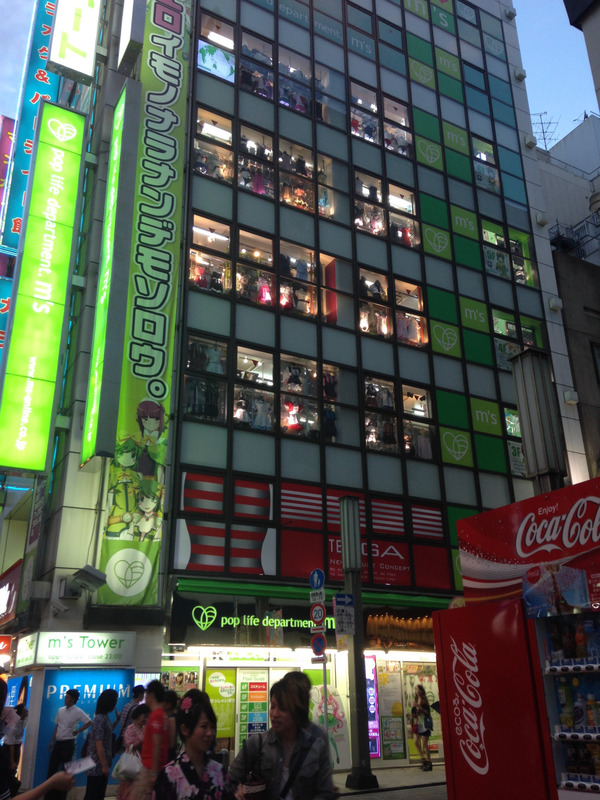
Here are some more pictures of Akihabara as the sun was setting, taken outside of the metro station:
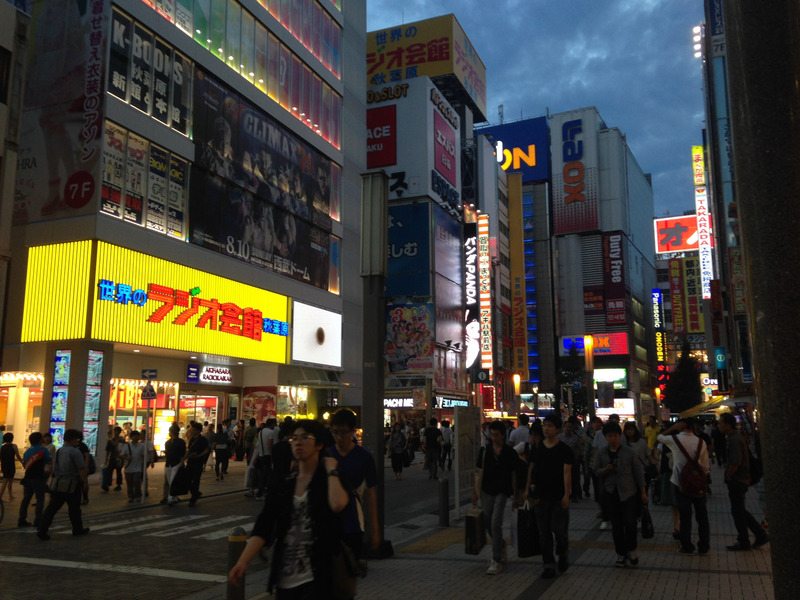
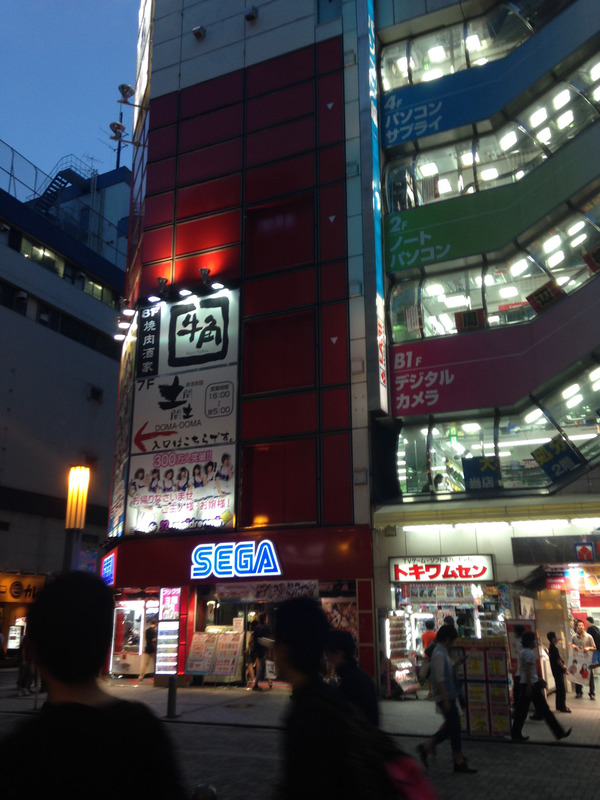
Ginza Hotel
We stayed at the Remm Hibiya hotel in Ginza, right near several theaters. One of the theaters featured an all-female cast, and they were currently advertising a dance performance. Some of the costumes were also on display. After the performances, a large silent all-female fan club would orderly line up on the street outside the theatre and wait for the performers to come out. The actress would then gather a paper envelope or some other fan-appreciation note from everyone. It was a bit unnerving how quite the whole event was — there was no talking and only occasional camera flashes.
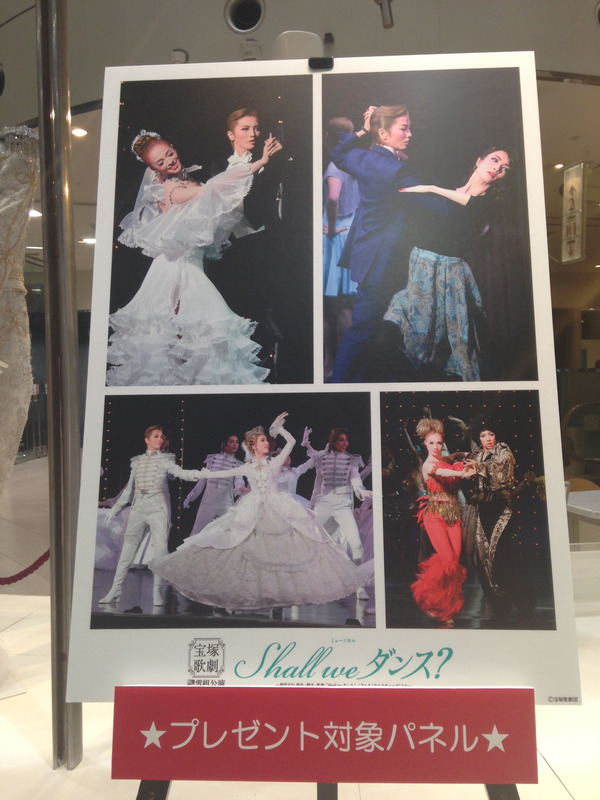
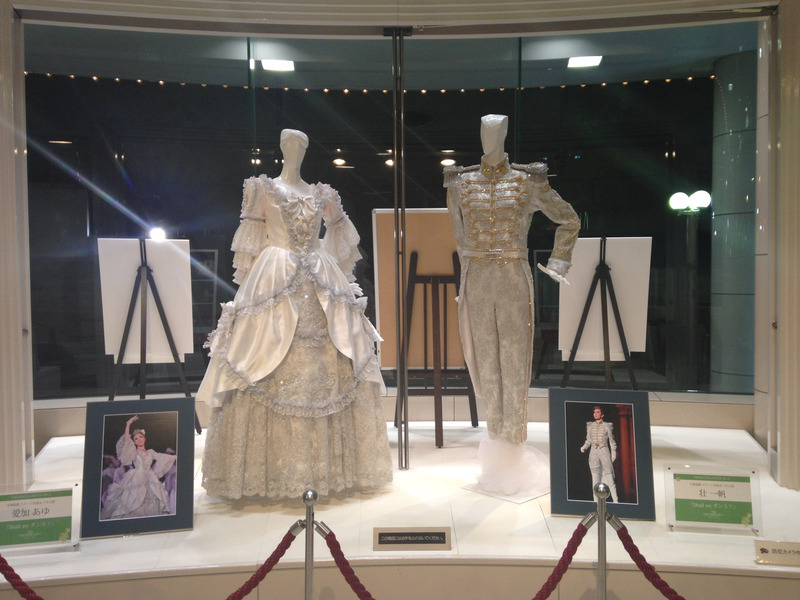
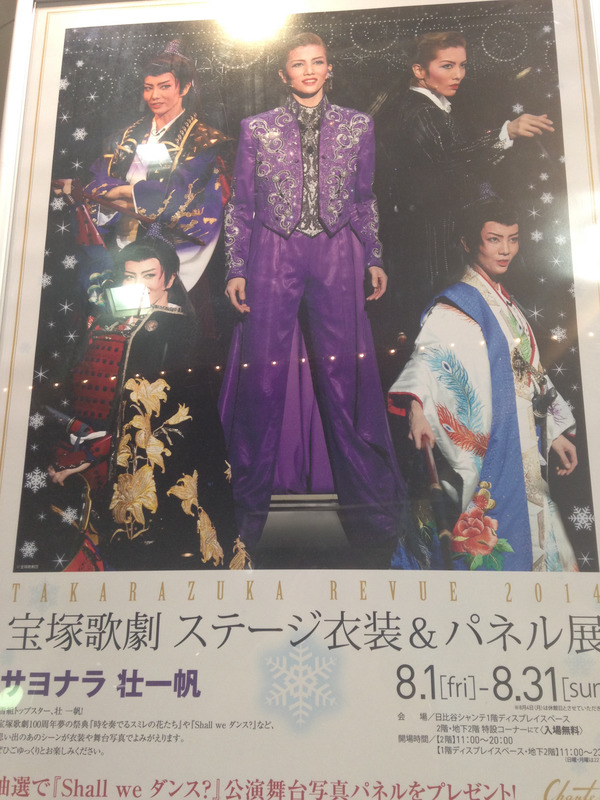
The Ginza Eki is also home to Jiro’s Sushi-ya, featured in Jiro Dreams of Sushi. We walked past once when it was closed, then passed by again a couple of days later. The restaurant is tucked away in a corridor separated from the rest of the station by a glass door that blocks most of the sound. Stepping into the corridor is like stepping into another world where you are compelled to whisper. A small sign in front of the restaurant requested that no pictures be taken.
Harajuku
This area is known for having edgy or experimental fashions, especially along Takeshita Street. I was a bit underwhelmed by the stores there, since things seemed to be aimed at a high school audience with smaller wallets and less picky tastes regarding quality.
Meiji Jingu
On the other side of Harajuku station from Takeshita Street is a large park containing Meiji Jingu, a shrine to the Meiji Emperor and his Empress. The area surrounding the shrine is very wooded, with lots of trees that have been sculpted to make the canopy appear artificially high. The shrine itself is a fairly large complex with a wide open courtyard.
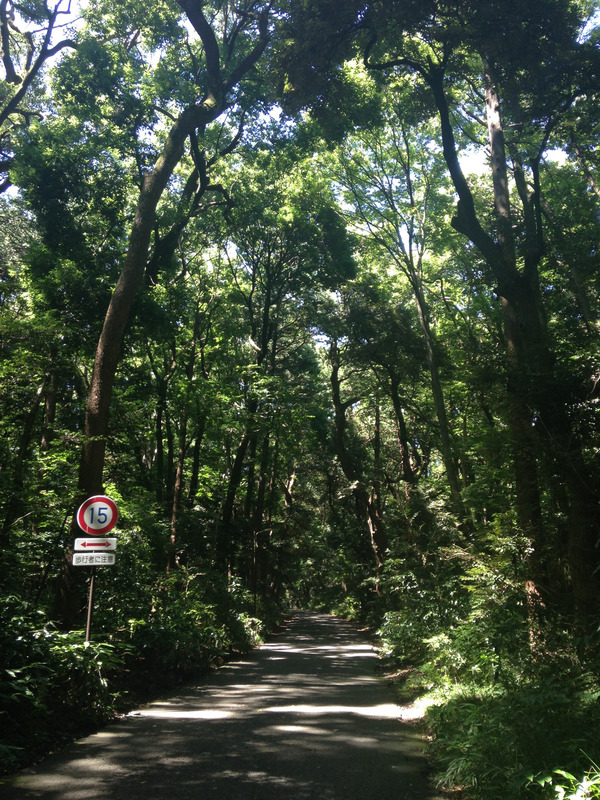
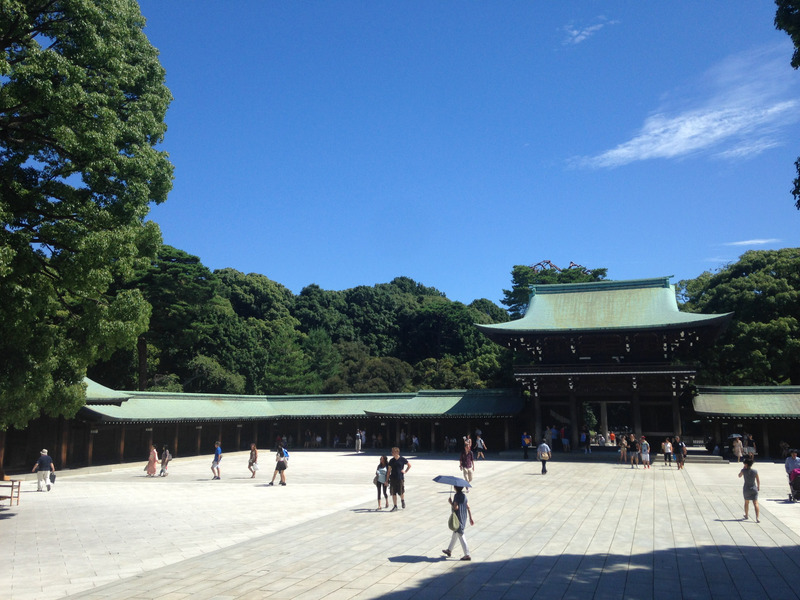
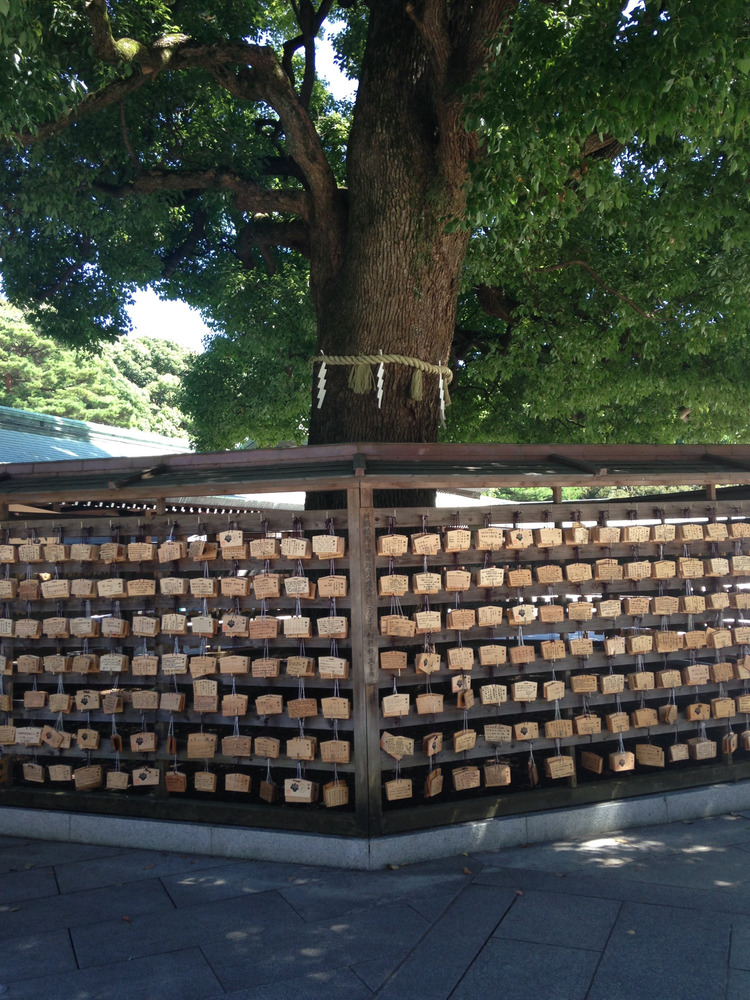
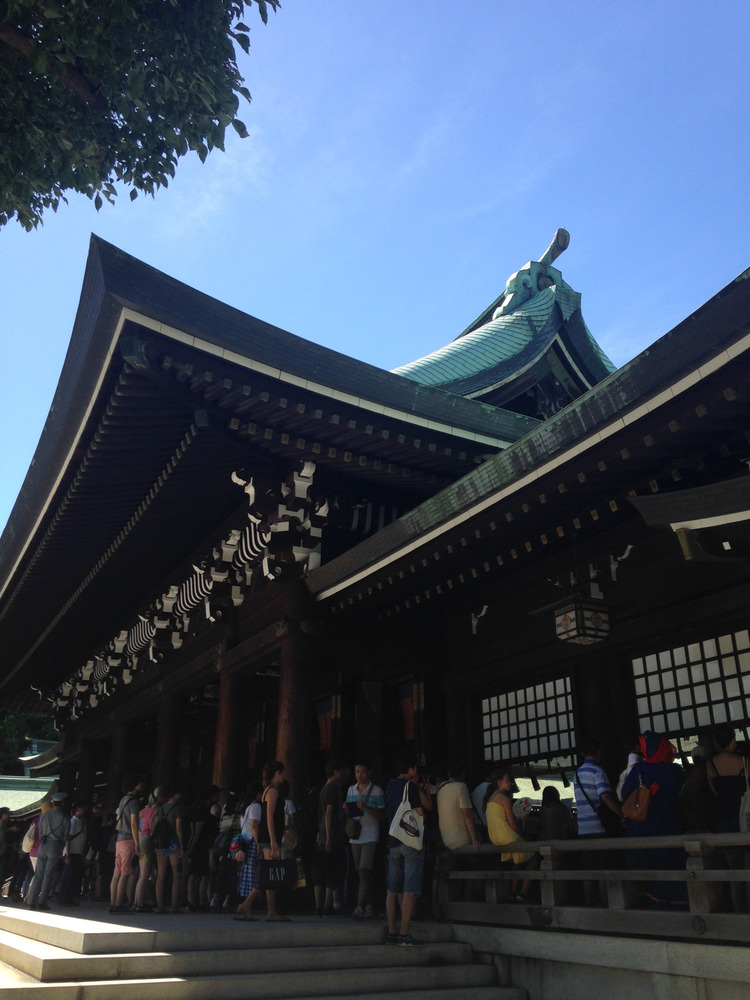
On the path leading to the shrine (we originally approached it from the back side, so missed the first time), there are wine barrels and rice wine caskets that were donated to the shrine.
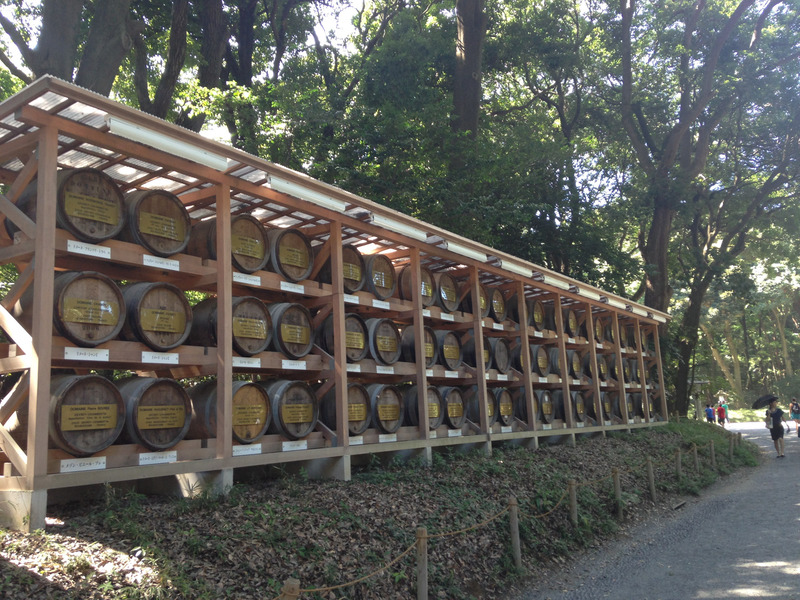
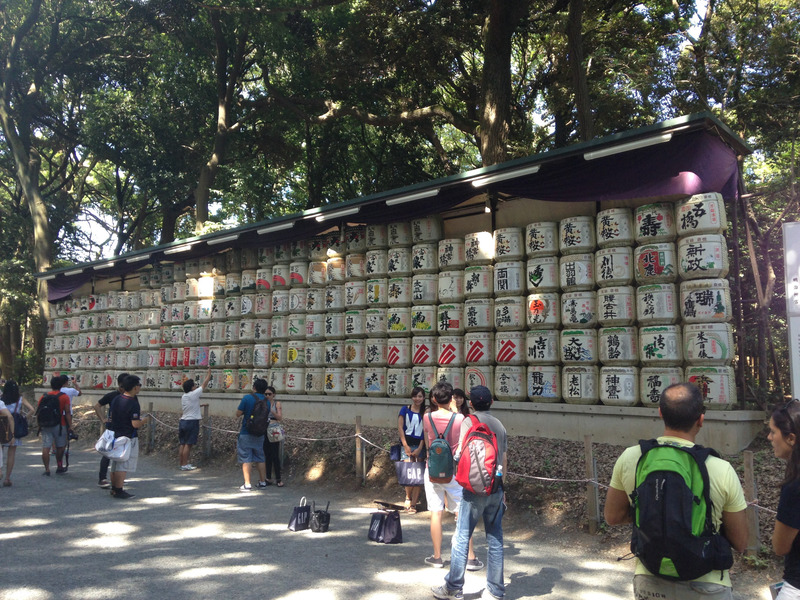
Shibuya
The statue dedicated to Hachiko, the loyal dog, is located outside of Shibuya Eki (Shibuya Station).
There’s lots of shopping in this area, including a chain store called Loft (the “rival” store that carries a similar selection is Tokyu Hands). This store sells a wide range of things, including arts and crafts, stationary, and kitchen goods.
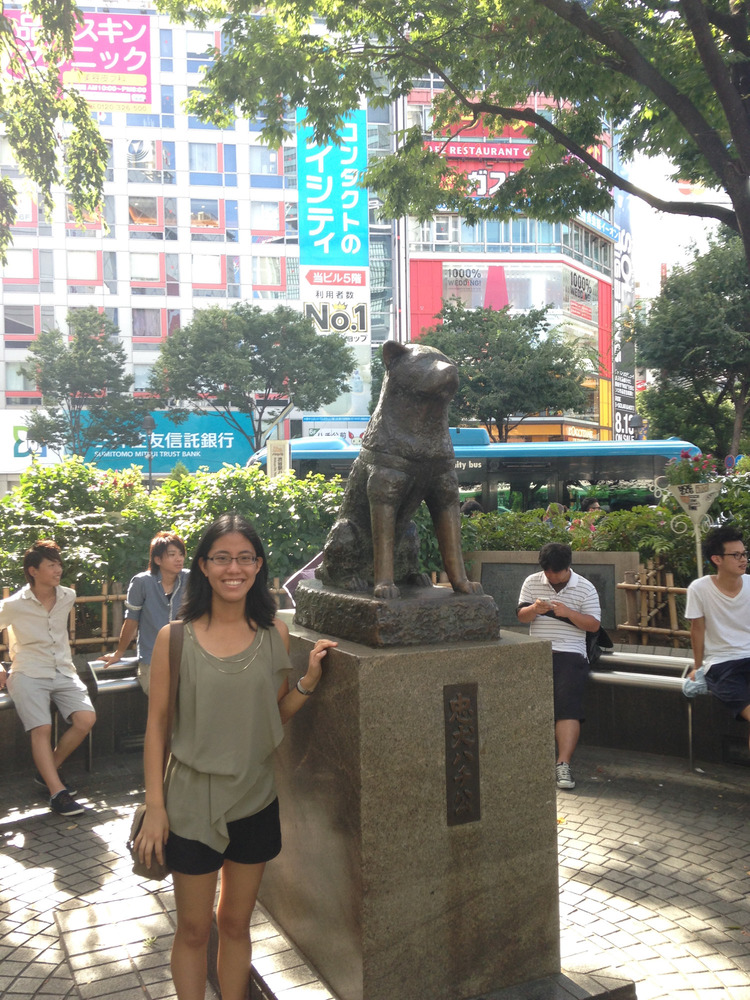
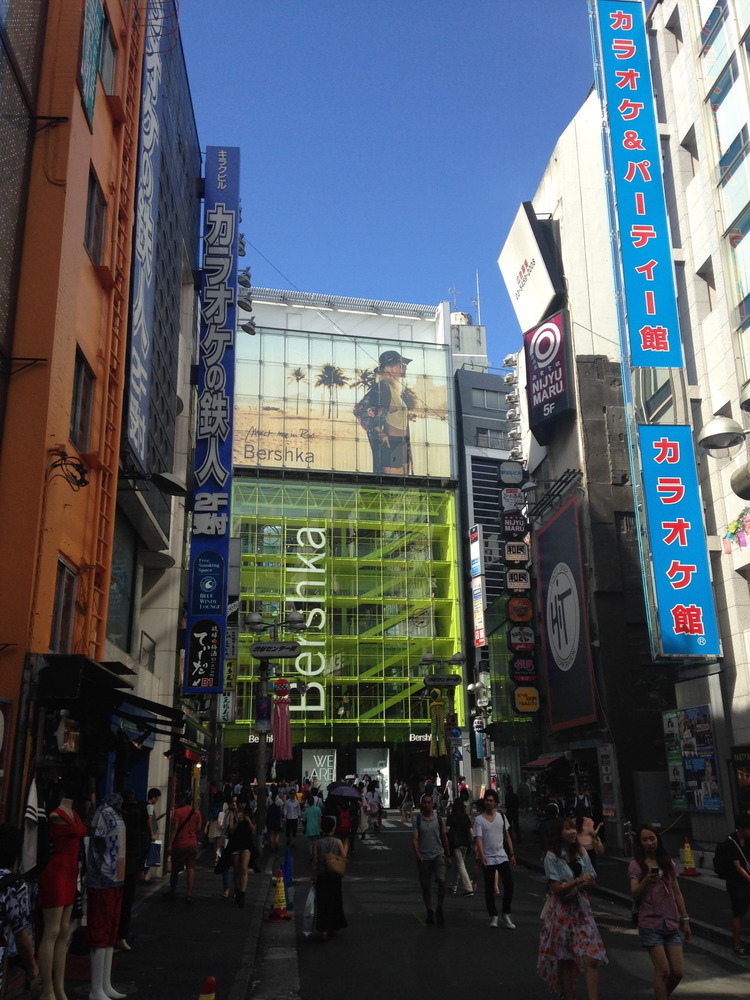
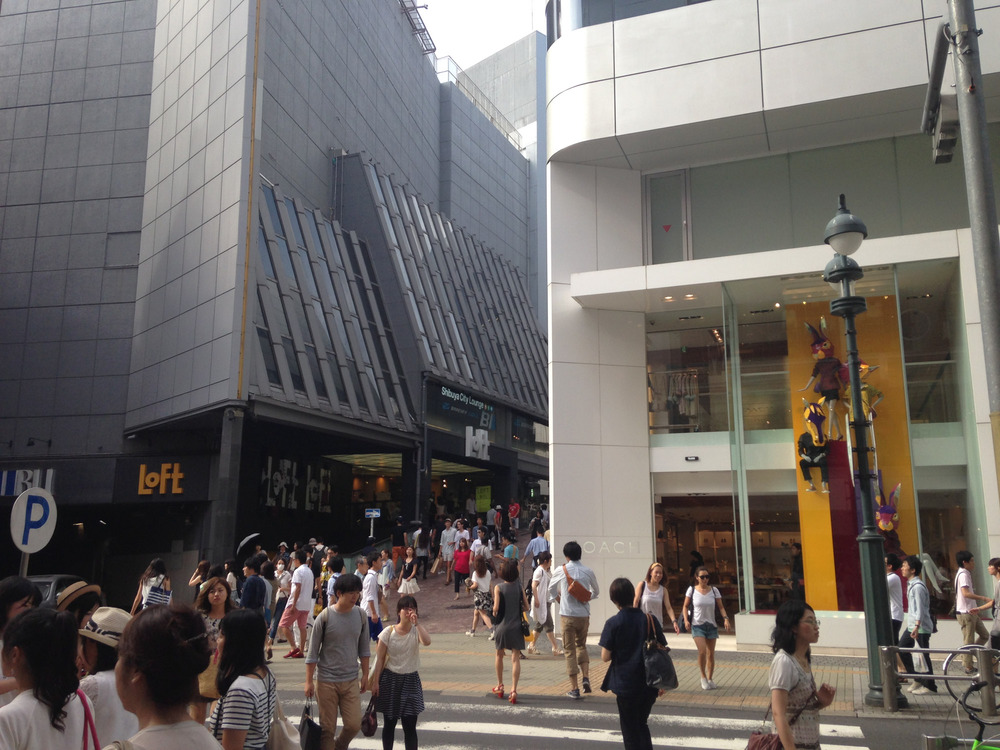
Transformers are incredibly popular in Japan, and there were advertisements for the new movie all over the place. Around Shibuya Eki, a lot of trucks are paid to just drive around with billboards for various things plastered on the side. The cabin of one truck I saw was painted like Optimus Prime and advertised the new move.
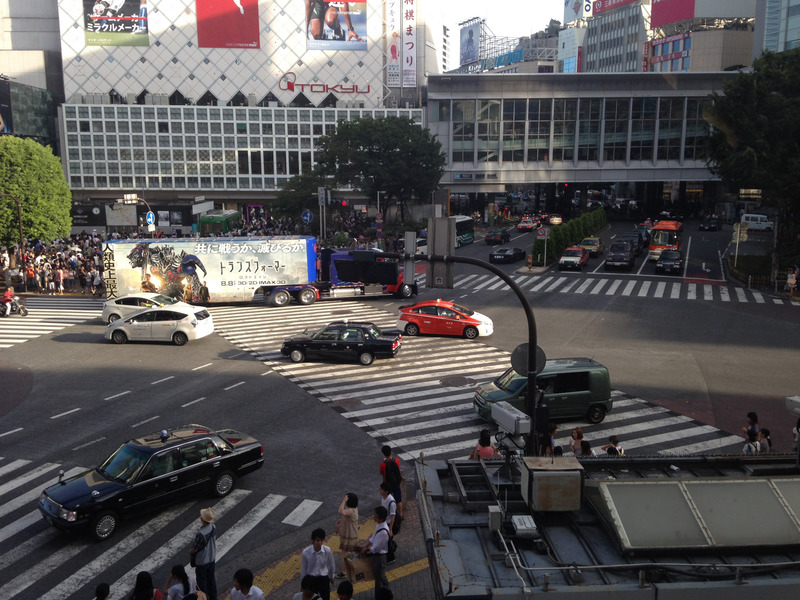
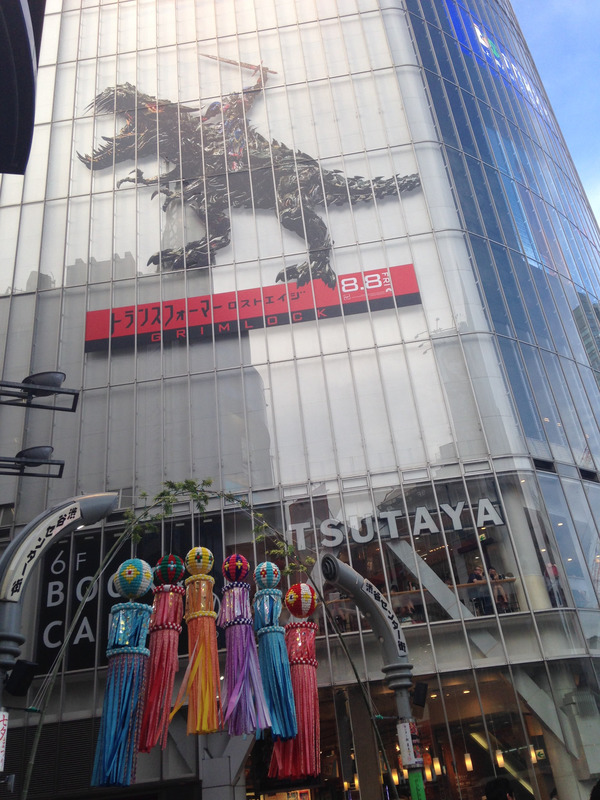
Shinjuku
Shinjuku has the busiest train station in the world, although it doesn’t feel that way because the 15 tracks are spread out. The area is very lively at night, and has many streets lined with lights. We also passed two mecha-girl statues while walking back towards the station; they might have been props for a restaurant.
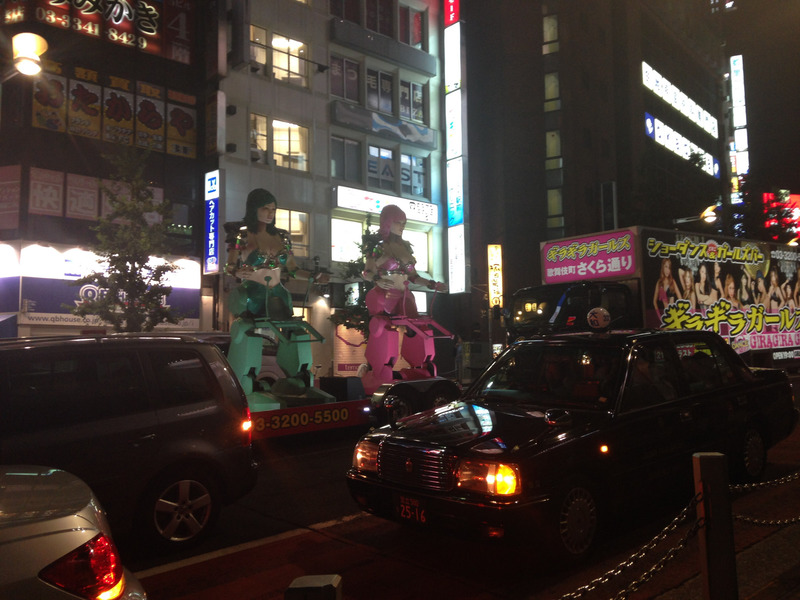
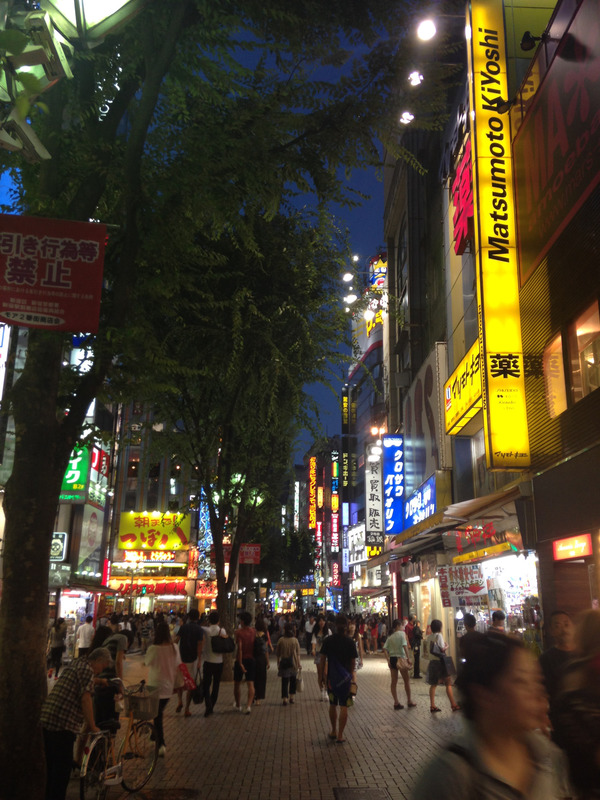
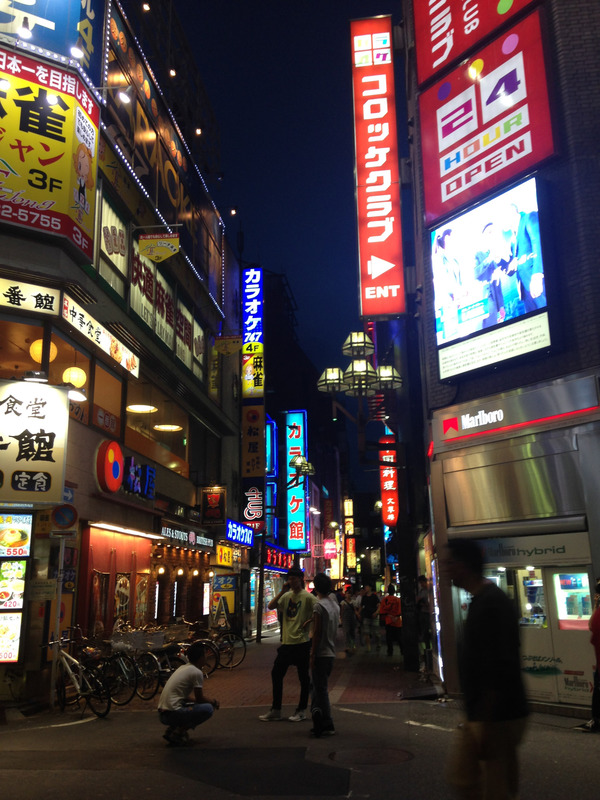
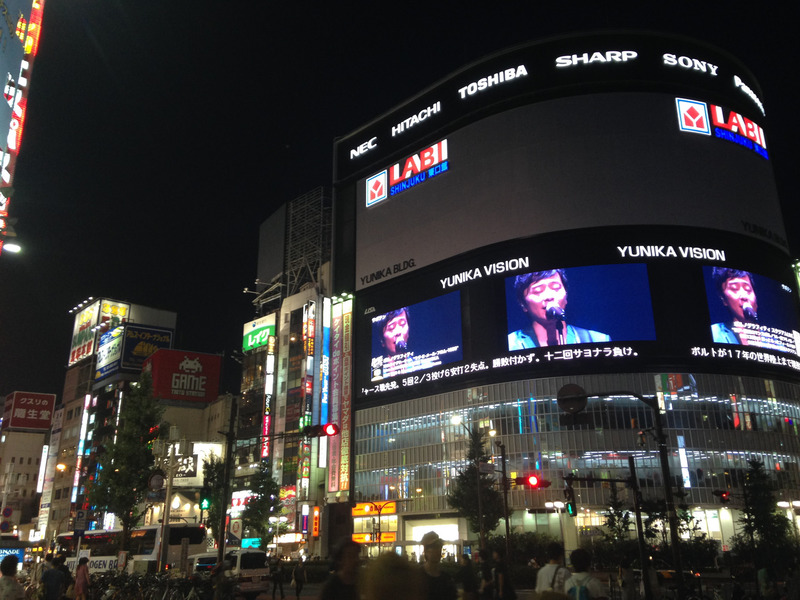
Shinjuku is also home to many large department stores such as Odakyu, shown in a series of three pictures below (one whole floor contained nothing but shoes — I don’t think I’ve ever seen that many shoes on display in one place before).
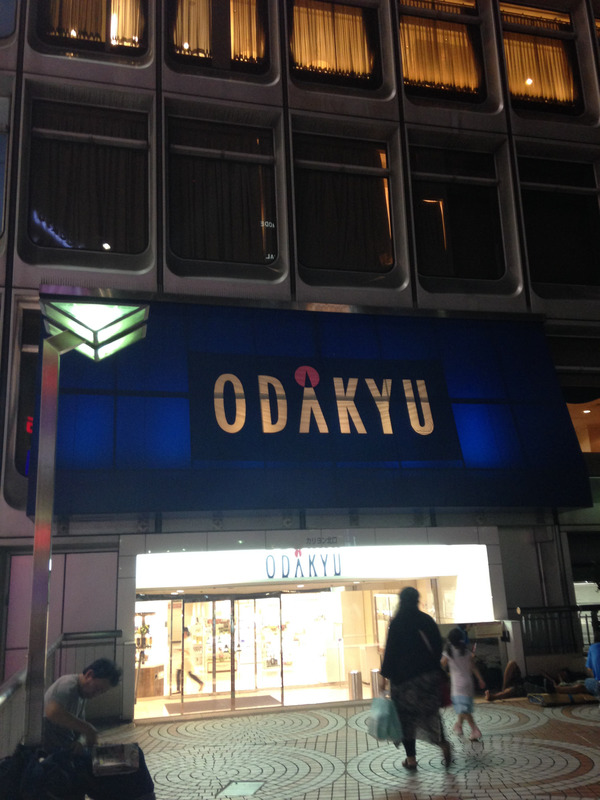
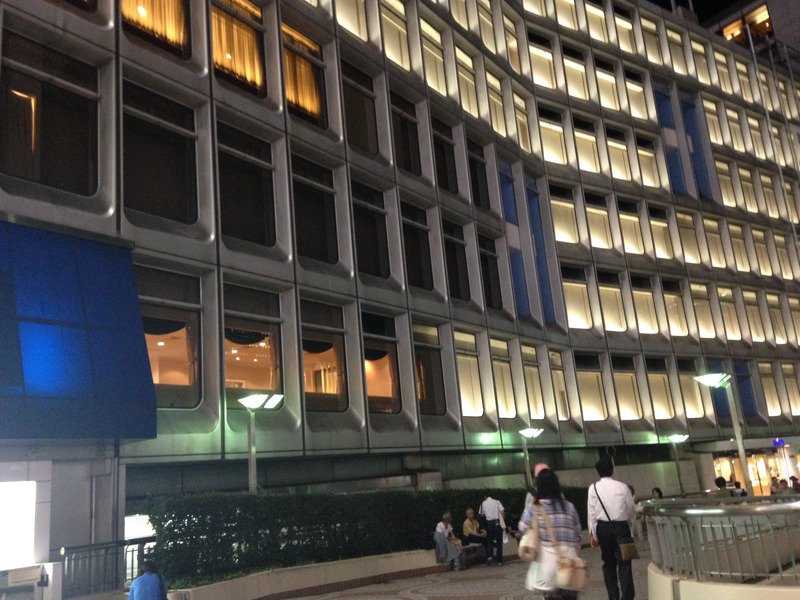
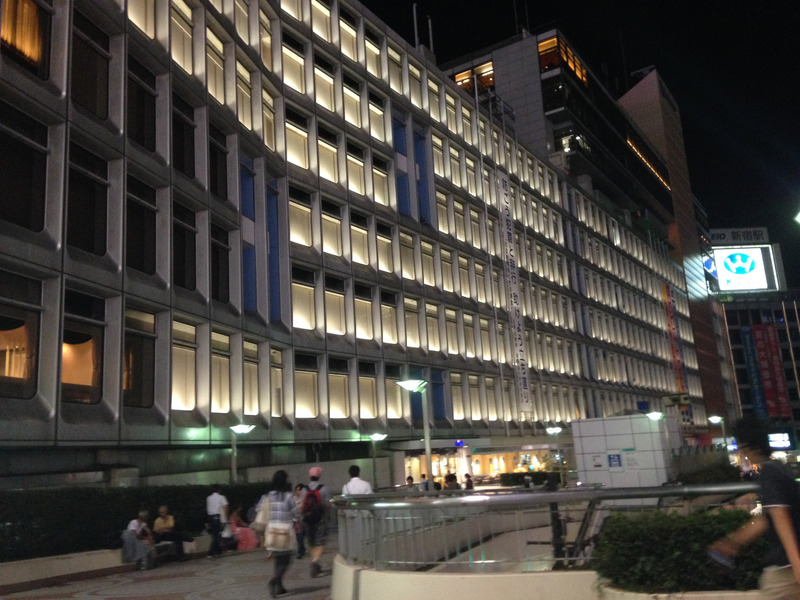
Fresh produce can sometimes come with an astronomical price. It is tradition for businessmen to gift these $30 mangos and $50 cantaloupes to their bosses.
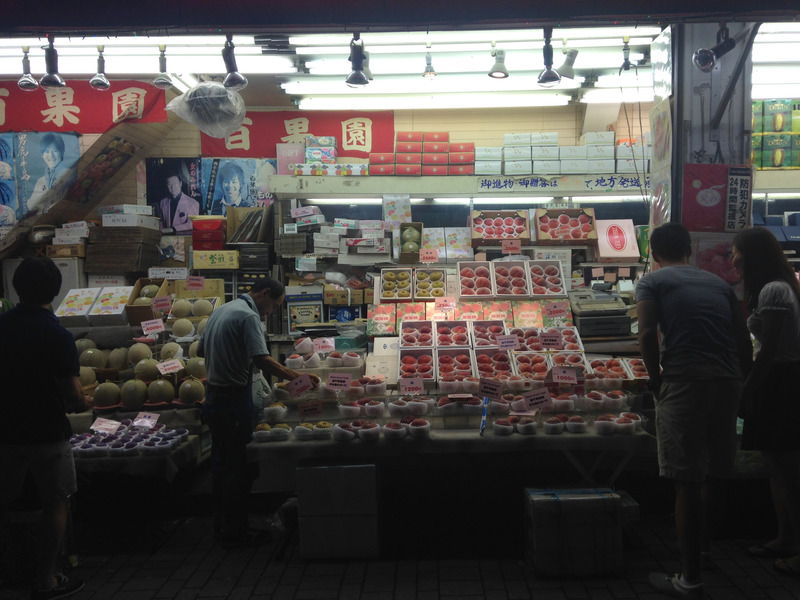
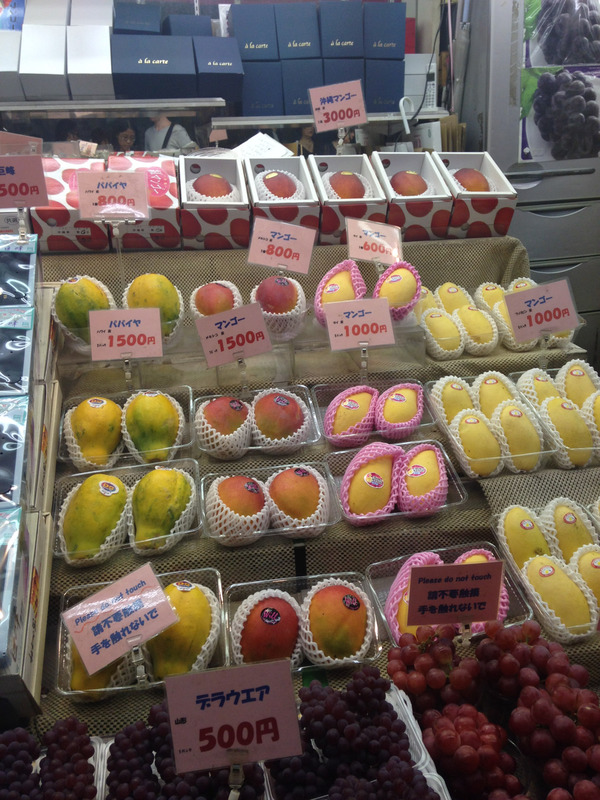
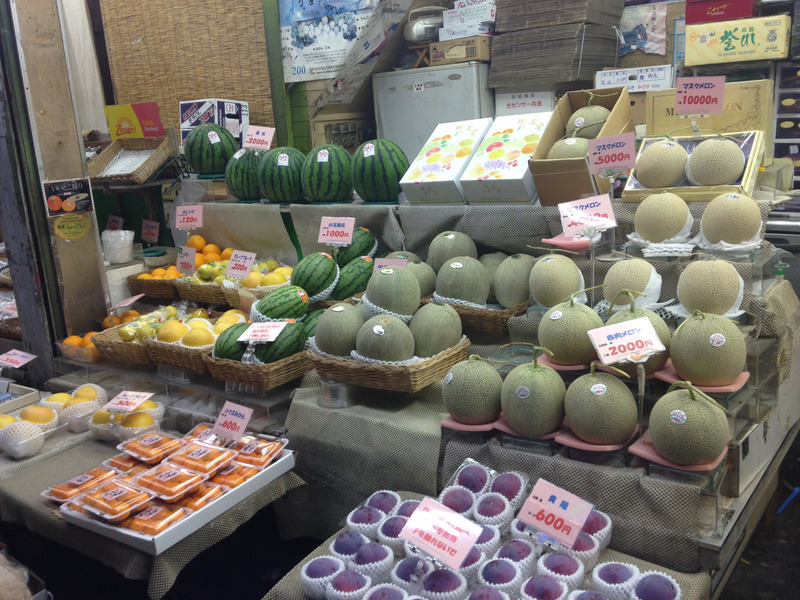
Tsukiji Fish Market
This is the fish market where the famous tuna auction happens. The fish market is located indoors in a building shaped like a quarter circle. Unfortunately, all the activity occurs in the morning (the tuna sale happens around 5am, I think), and Jake and I got caught up in exploring the surrounding area. Outside the fish market is an area filled with stalls and restaurants. We got to watch people making fancy tamago blocks, and there was lots of fresh fish and various snacks.
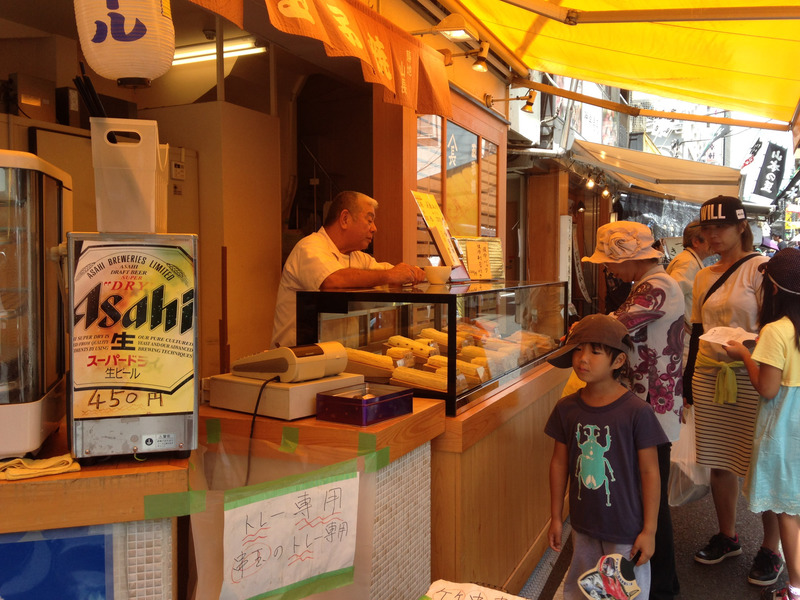
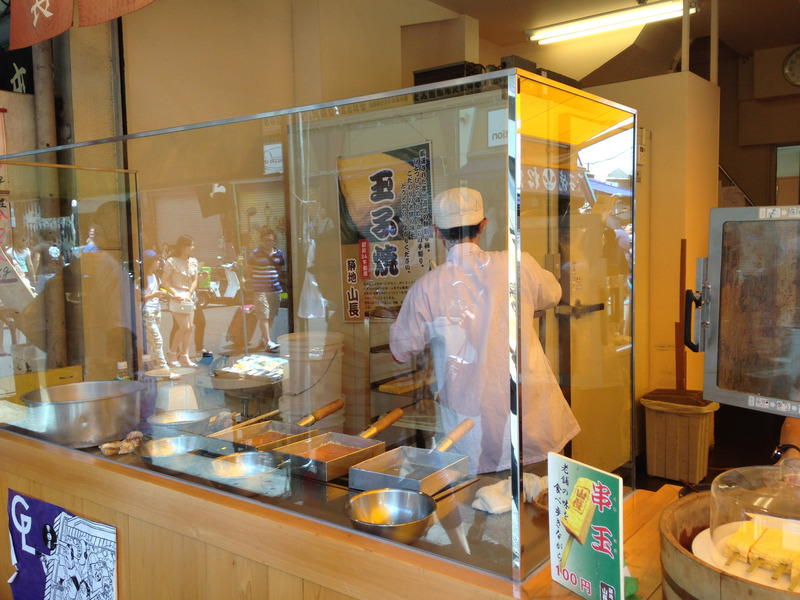
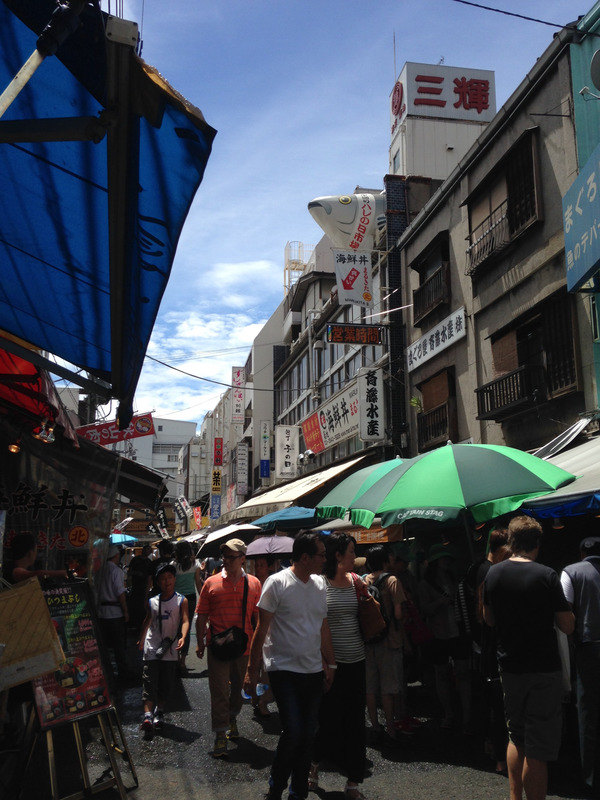
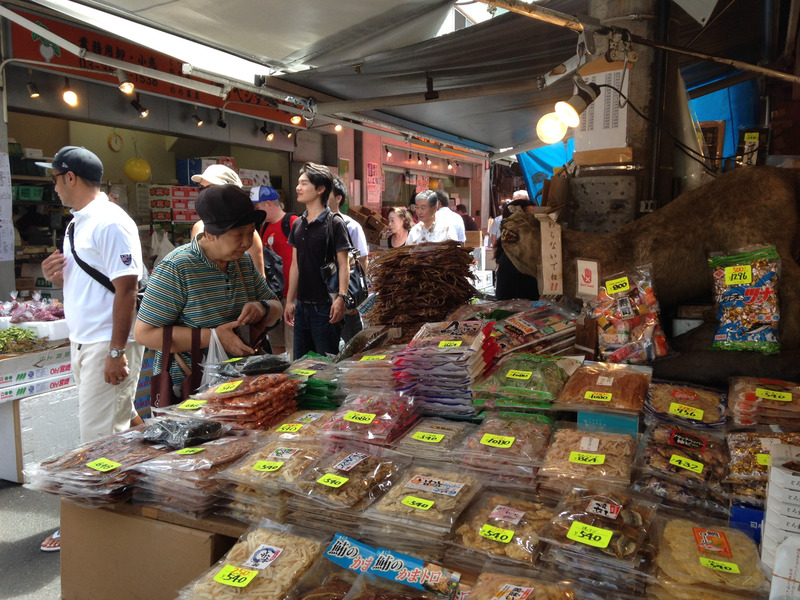
Inside the (deserted) fish market:
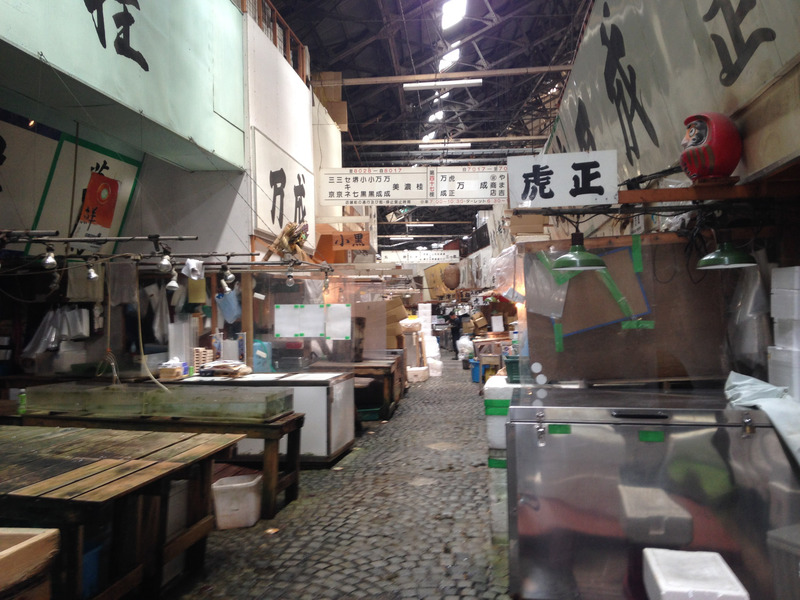
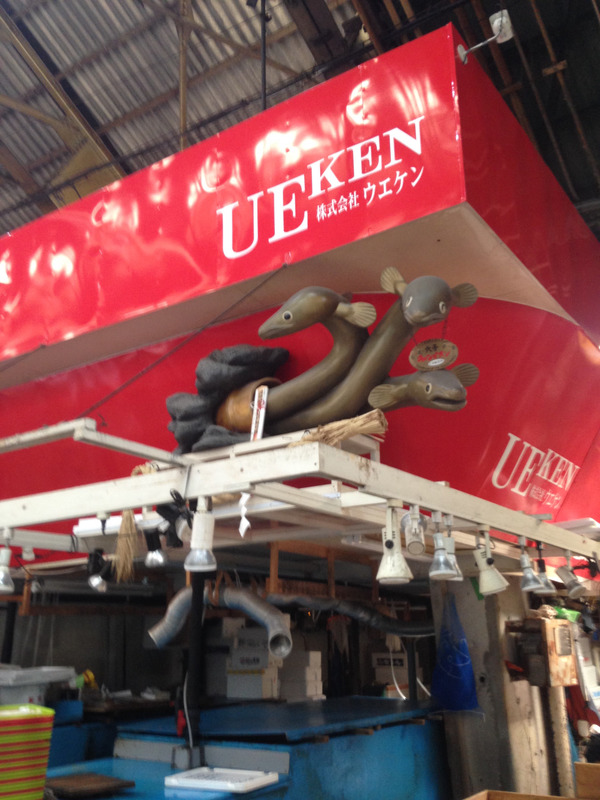
Asakusa
This area contains Senso-ji, a Buddhist temple that is the oldest temple in Tokyo.
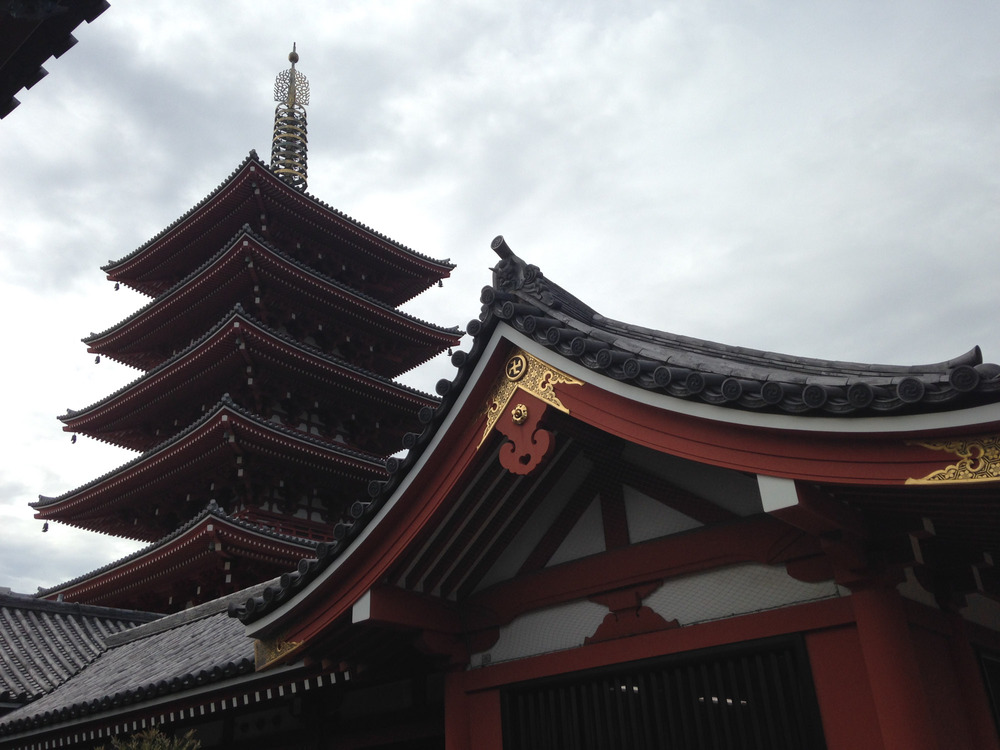
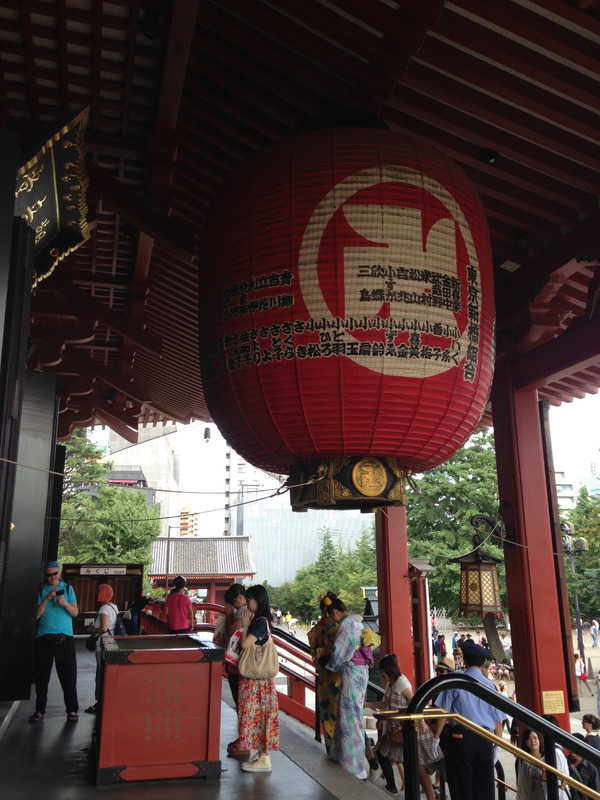
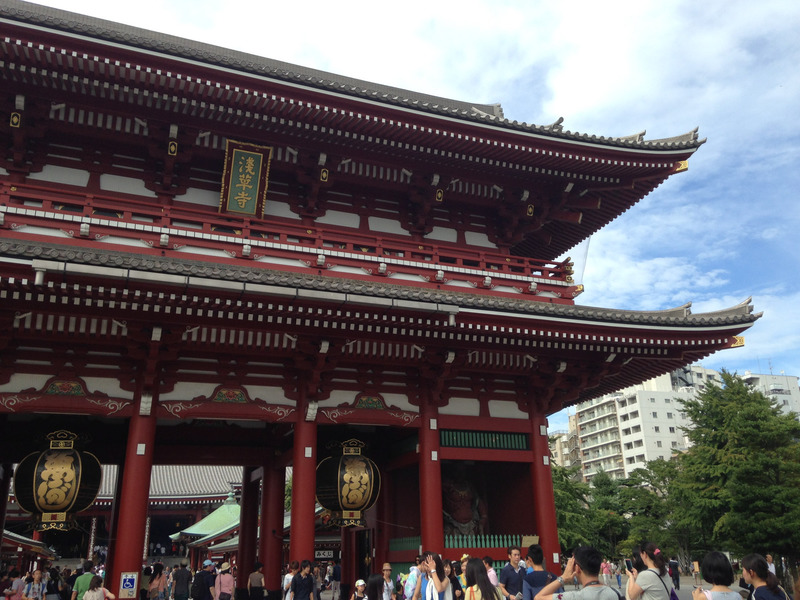
There was also a variety of smaller architectural styles, very different from the skyscrapers and neon lights in other areas of Tokyo.
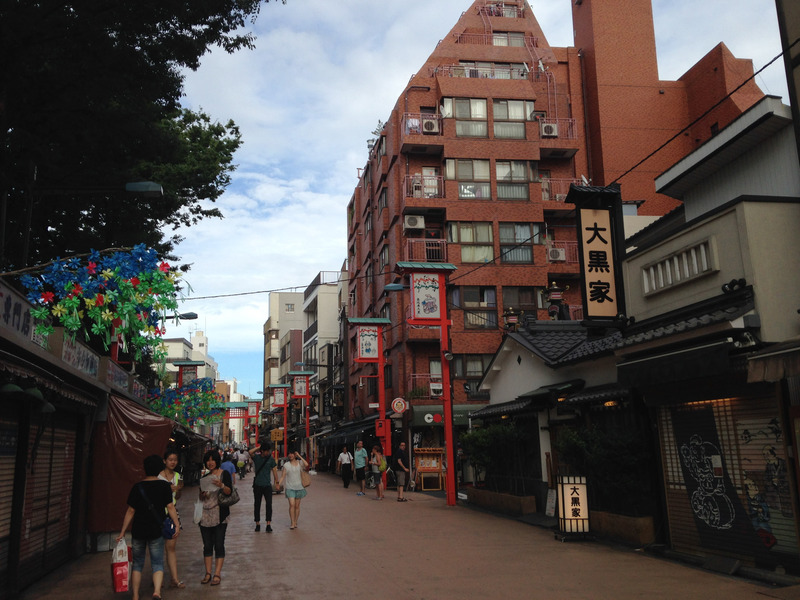
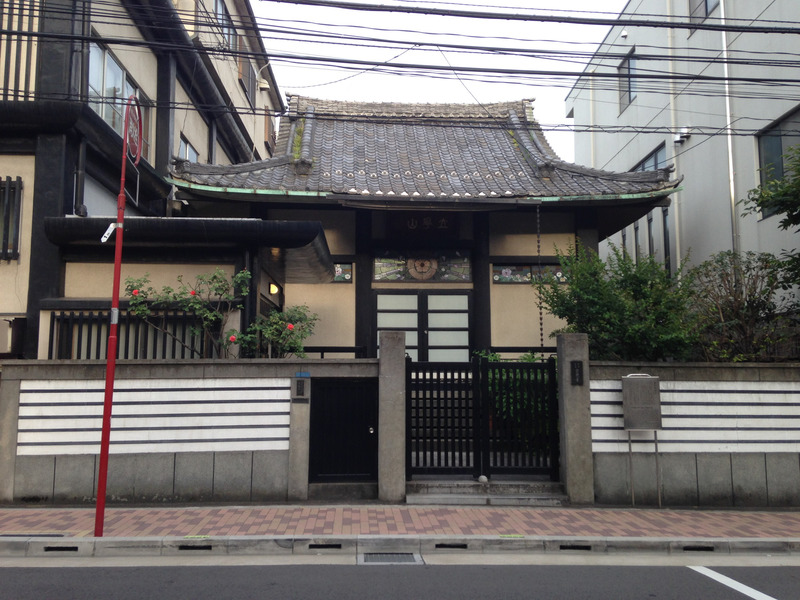
Kappabashi
This street is also known as “Kitchen Town”, and is located in Asakusa. Stores on this street carry a wide range of things that might be purchased by restaurants, including knives of all kinds, ceramic dishes, plastic takeout containers, fake food (a single crepe will cost about 5000 yen or $50), pots and pans (including square frying pans for cooking eggs), and red paper lanterns for hanging outside.
